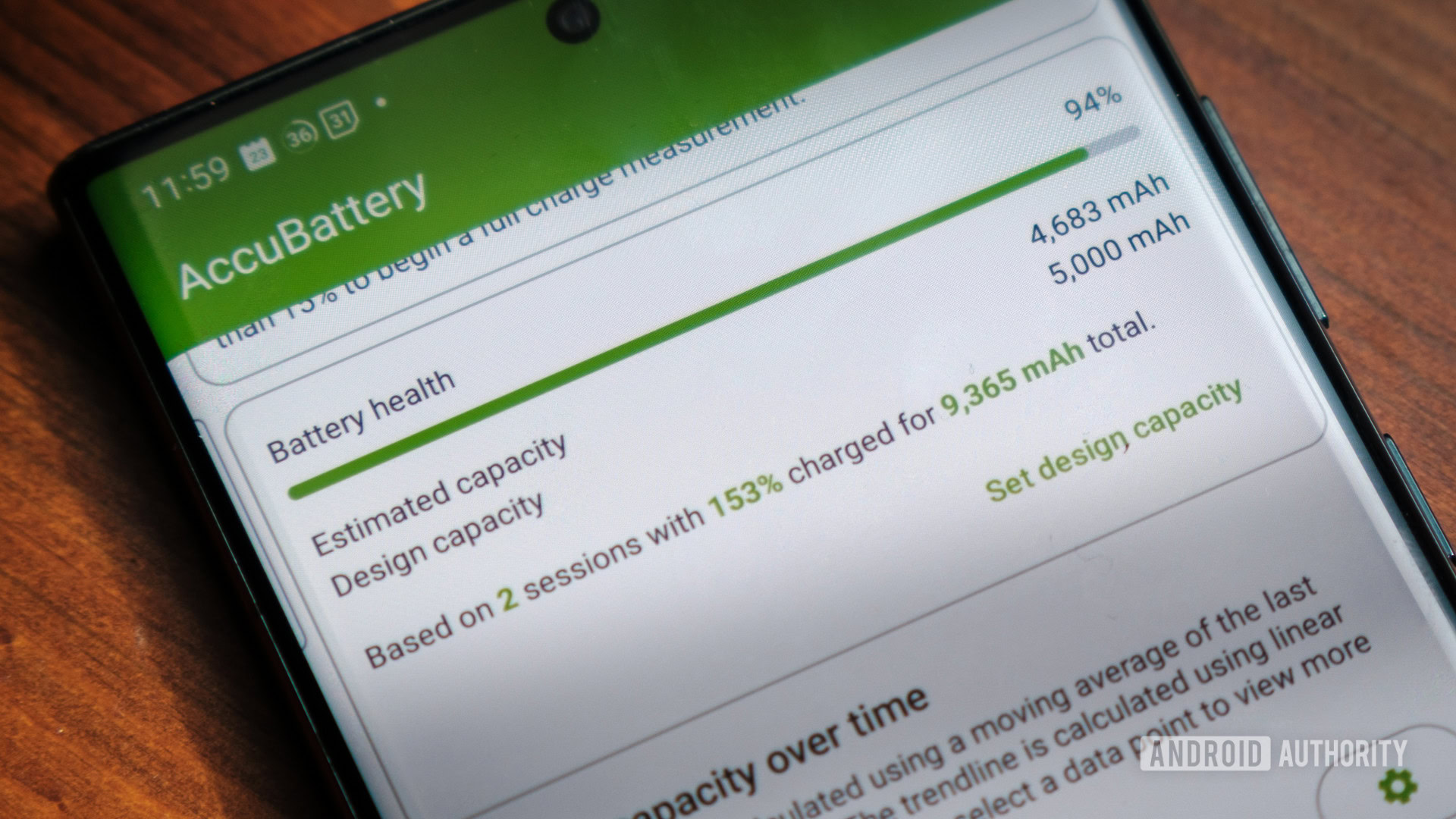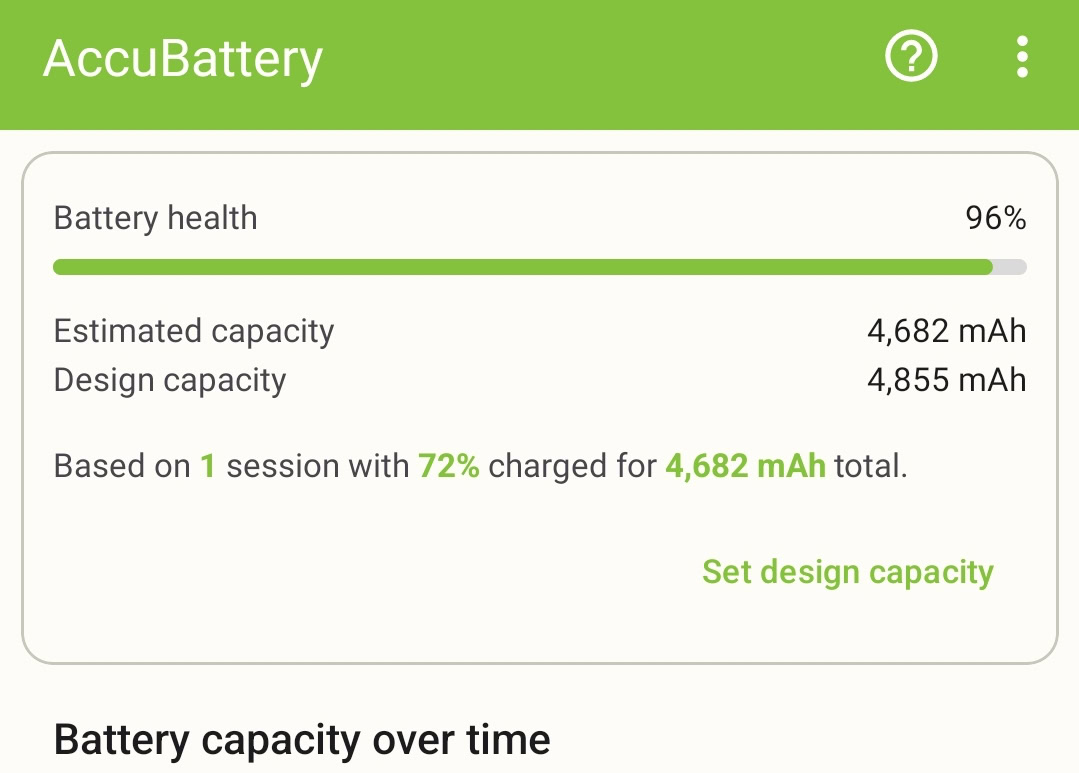Affiliate links on Android Authority may earn us a commission. Learn more.
Why is there no easy way to see battery health on Android?
Published onAugust 26, 2023

Batteries don’t last forever; that’s just an unfortunate fact of smartphone life. As controversial as the iPhone 14’s seemingly limited long-term battery health may be, at least Apple provides an easy method to track how your power cell is holding up. It’s as simple as checking your regular battery settings. So while your iPhone may eventually only last a few hours on a single charge, at least you’ll be well prepared to book that battery replacement.
Android, by comparison, is a black box. Everything ticks along fine until your phone starts restarting, and hopefully, you piece together that the battery is kaput before sending the phone away for diagnostics. A simple battery replacement isn’t all that expensive, especially compared to a new phone. But many will end up discarding an otherwise perfectly working handset because it’s not clear what the cause of the problem really is or they need an immediate fix.
A heads-up would be nice, to say the least. Especially as many phones in the flagship and mid-tiers receive long-term updates that, in theory, will keep them ticking along for four or five years. Increasingly, the battery is the weakest link when running your phone for many years and consumers now need a way to keep on top of this potentially key repair.
Battery health monitoring is essential for phones built to last four or five years.
We reached out to Google to ask why no such feature is built into Android and whether there are plans to adopt an iPhone-esque percentage of initial capacity metric. Unfortunately, we received no response. As it stands, Android simply doesn’t include specific tools for tracking battery health baked into the operating system, leaving users at the whims of third-party applications.
All hope is not lost, though. A new battery health API in the latest Android 14 beta could allow apps and OEMs to expose this information to owners easily in the future. In the meantime, you might have to make do with one of the few Android apps that can help track battery health.
If your phone only lasts a few hours on a full charge, randomly restarts, or struggles to charge to full, it’s likely time to replace the battery.
How to check Android battery cycles and health
Depending on your smartphone, there are several ways to check your smartphone’s battery health. We’ve detailed a couple of the best options below.
Is it possible to check Samsung battery health?
If you’re a Galaxy owner, Samsung provides a method to check battery health that doesn’t rely on a third-party app. You’ll have to grab the Samsung Members app from the Galaxy Store or Play Store first and can then check battery health from the familiar settings menu.
Once installed, head to Settings > Battery & Device Care > Diagnostics > Phone Diagnostics, and press the Battery Status button. You can then see your phone’s battery status under the “Life” result.
Samsung offers a simplified “Good,” “Normal,” or “Weak” rating system to make it easy to understand, in addition to displaying the phone’s rated battery capacity. Your battery shouldn’t need replacing until the readout states Weak. However, power users may find that their phone doesn’t quite last as long as usual, even with a Normal rating.
Android apps to quickly see battery health
Non-Samsung owners can pick from a selection of third-party applications that claim to report battery health. Many hardware monitoring apps offer a battery health rating, including AIDA64, CPU Z, Device Info, and others.
These apps pull out the phone’s reported battery capacity, temperature, voltage data, and a battery health score. However, that relies on the apps being able to access this information, and that battery statistics are reported accurately by the OEM, which is not always the case. Without the new Android 14 API, it’s unclear if the battery capacity is reported dynamically, so we’d view these apps as a rough guide rather than a reliable gauge of your phone’s remaining battery health.
Typical Android phones are rated to hold 80% initial battery capacity after 500 to 800 charges. It varies by user, but most phone batteries will last at least two to three years before issues.
Track battery health with Accubattery
If you’re looking for long-term battery health monitoring, the third-party Accubattery app is a solid choice to identify poor battery health. The app is free, but a paid version removes ads and unlocks additional functionality.
You’ll have to permit Accubattery to run in the background to track your charging stats, as it doesn’t provide an instantaneous reading like other hardware monitoring apps. Instead, you’ll have to fully charge the phone at least once before the app provides a reading.

In addition, Accubattery provides insights into your charging habits, including your typical charging speeds, wear, and efficiency with each charging cycle. This can be helpful if you’re looking to maximize battery health by following the best smartphone charging habits.